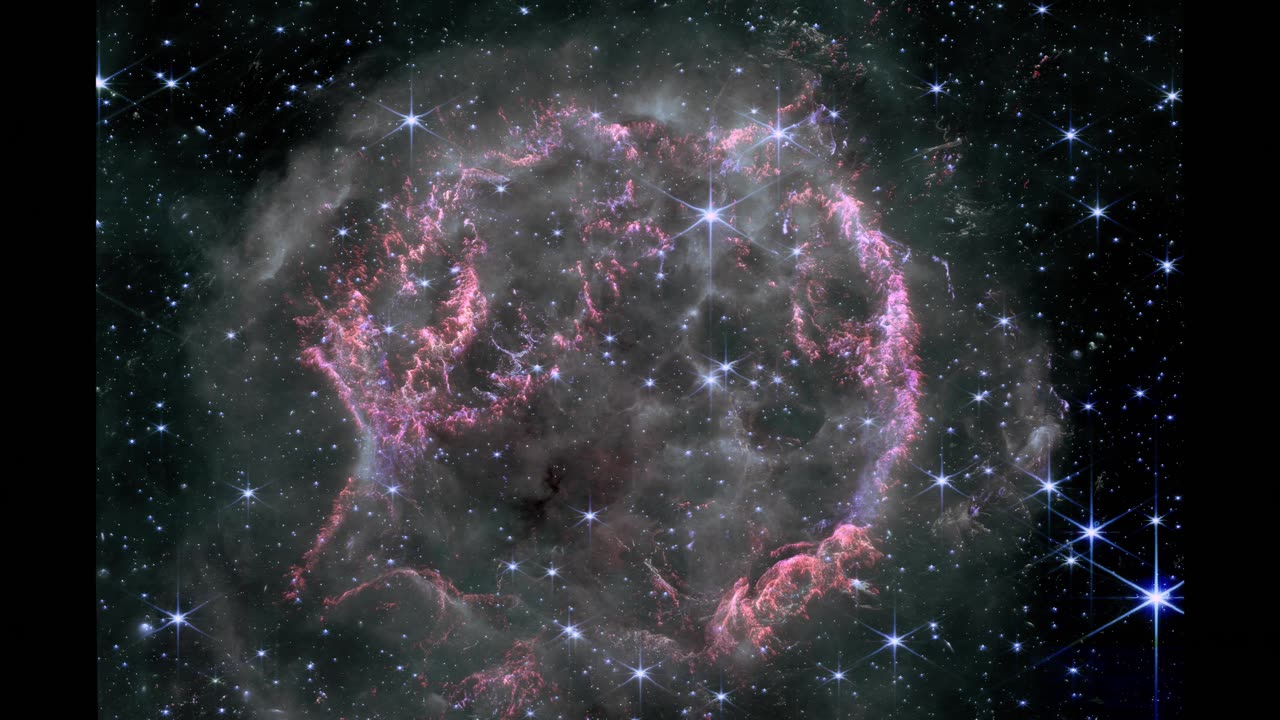Premium Only Content

Mapping the Depths of Cassiopeia A with Cutting-Edge Algorithms
Using an updated synthetic depth map algorithm, we explore Cassiopeia A (Cas A), the youngest known supernova remnant in our Milky Way Galaxy. Cas A is located about 10,000 light-years away in the constellation Cassiopeia. The explosion that created this remnant happened around 10,000 years ago, but its light only reached Earth in the late 1600s. This collapsed star has been extensively studied, providing valuable insights into the dynamics and evolution of supernovae.
The data for this visualization came from the MAST dataset, including three filtered images in the F162M, F356W, and F444W wavelength bands. We processed these raw images using FITS Liberator, Siril, and refined them in GIMP, resulting in a file size of about 0.5 GB. We then downsampled the image to 4K resolution for easier processing. Despite the lower resolution, the final product is a concise video made up of 2,560 individual images, taking up about 18 GB of storage space. The video is approximately 1 minute and 25 seconds long.
We used advanced machine learning methods, including ISED and ISEE image filtering, along with Gaussian smoothing, to create a custom depth map algorithm. This algorithm infers depth information from the JWST NIRCAM image data. By comparing ground-truth images, depth maps, and kinematic reconstructions, as discussed in the paper "A Detailed Kinematic Map of Cassiopeia A's Optical Main Shell and Outer High-velocity Ejecta" by Milisavljevic and Fesen, we show that it's possible to build a 3D model of the Cas A supernova remnant with these imaging techniques.
The newly processed image features an extended view of the "baby Cassiopeia A" light echo, located several light-years behind the supernova remnant, which wasn't in the original release. Further analysis using ISED and ISEE filtering methods aims to reveal more filamentary structures within the nebula. This will take additional time and effort to analyze the dataset thoroughly. Throughout the processing and analysis, we carefully balance noise reduction with preserving important information in the chromatically ordered image.
Data Sourced: MAST Archive, NASA , Dan Milisavljevic et al.
Image: STYX AI
Video: STYX AI
Music: STYX AI Title: Classical AI
-
 1:08:44
1:08:44
VINCE
3 hours agoThe Deep State Strikes Back! (Guest Host Shawn Farash) | Episode 176 - 11/25/25 VINCE
63.5K43 -
 LIVE
LIVE
Benny Johnson
1 hour agoIt's All True, The 2024 Election Was Ready To Be Rigged. The REAL Story of How Trump-Elon STOPPED It
5,011 watching -
 LIVE
LIVE
LFA TV
13 hours agoLIVE & BREAKING NEWS! | TUESDAY 11/25/25
3,723 watching -
 1:31:20
1:31:20
Graham Allen
3 hours agoPentagon DROPS HAMMER on Sen. Kelly for Urging Troops to DEFY Orders!! Sedition Exposed!
97.9K476 -
 LIVE
LIVE
Badlands Media
11 hours agoBadlands Daily: November 25, 2025
3,712 watching -
 LIVE
LIVE
Wendy Bell Radio
6 hours agoYou Realize We Voted For This.
6,735 watching -
 26:00
26:00
Neil McCoy-Ward
4 hours agoAnd So It Begins… ('Carbon' Food Quotas Are HERE)
3.21K6 -
 LIVE
LIVE
The Big Mig™
3 hours agoWTF? Letitia James & James Comey Charges Dropped
2,764 watching -
 1:09:24
1:09:24
Chad Prather
17 hours agoWe Must Obey God: The Gospel That Cannot Be Silenced
66.1K26 -
 1:04:27
1:04:27
The Mike Schwartz Show
2 hours agoTHE MIKE SCHWARTZ SHOW with DR. MICHAEL J SCHWARTZ 11-25-2025
2.9K6